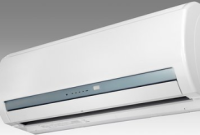Are you enjoying the benefits and convenience of using Windows Terminal? This robust and efficient terminal application is undoubtedly a valuable tool for users of the command-line tools. However, have you considered what you would do if you lost all your Terminal settings due to a system crash or any other unforeseen circumstance?
This is where backing up your Windows Terminal settings becomes not only recommended but essential. In this comprehensive guide, we will show you how to backup and restore your Windows Terminal settings easily.
Understanding Windows Terminal
Before we proceed to the backup and restoration process, let us first understand the Windows Terminal. It is a modern, versatile, and hub for command-line tools and shells like PowerShell, Command Prompt, and WSL. It offers a wide range of features such as multiple tabs, customizable themes, styles and configurations, panes, Unicode, and UTF-8 character support, among others.
The Importance of Backing Up Windows Terminal Settings
Although Windows Terminal automatically stores all your global data in a settings.json backup file, I strongly advise creating a local backup copy. A local backup copy increases the chances of restoring your settings in the event of a system crash or unforeseen issues. Thus, it is essential to learn how to backup and restore Windows Terminal settings.
Backing Up Windows Terminal Settings
You can back up Windows Terminal settings using either File Explorer or Command Prompt. Both methods involve copying the settings.json file to a local location on your computer.
Using File Explorer:
1. Navigate to this directory C:\Users\
2. In this directory, locate the settings.json file containing all your Windows Terminal settings.
3. Copy the settings.json file to a secure location on your computer to serve as your local backup.
Using Command Prompt:
1. Open Command Prompt and type this command: copy %LOCALAPPDATA%\Packages\Microsoft.WindowsTerminal_8wekyb3d8bbwe\LocalState\settings.json
2. Press Enter to execute the command. This will copy the settings.json file to your specified location.
Restoring Windows Terminal Settings
Restoring your Windows Terminal settings is a straightforward process that requires copying your backed up settings.json file back into the LocalState directory. You can use the File Explorer or Command Prompt method in the backup process to restore your settings.
After restoring the settings.json file, remember to reboot your system for changes to take effect.
Locating Windows Terminal Settings
In case you need to locate the settings.json file, it is stored in this directory: C:\Users\
Reinstalling Windows Terminal
If you ever need to reinstall Windows Terminal, do so through the Windows PowerShell. To do this, search for Windows PowerShell in the Windows Search bar and click “Run as administrator” to open an elevated Command Prompt window. From there, you can reinstall Windows Terminal.
Conclusion
In conclusion, backing up and restoring Windows Terminal settings is essential for preserving your customized settings and ensuring a seamless user experience in case of any crashes. We hope this article has been informative, and you can backup and restore your Windows Terminal settings easily using the methods we have provided.





